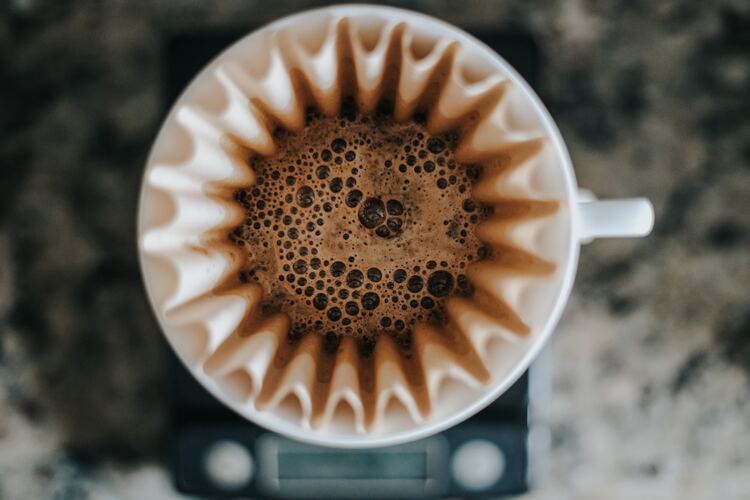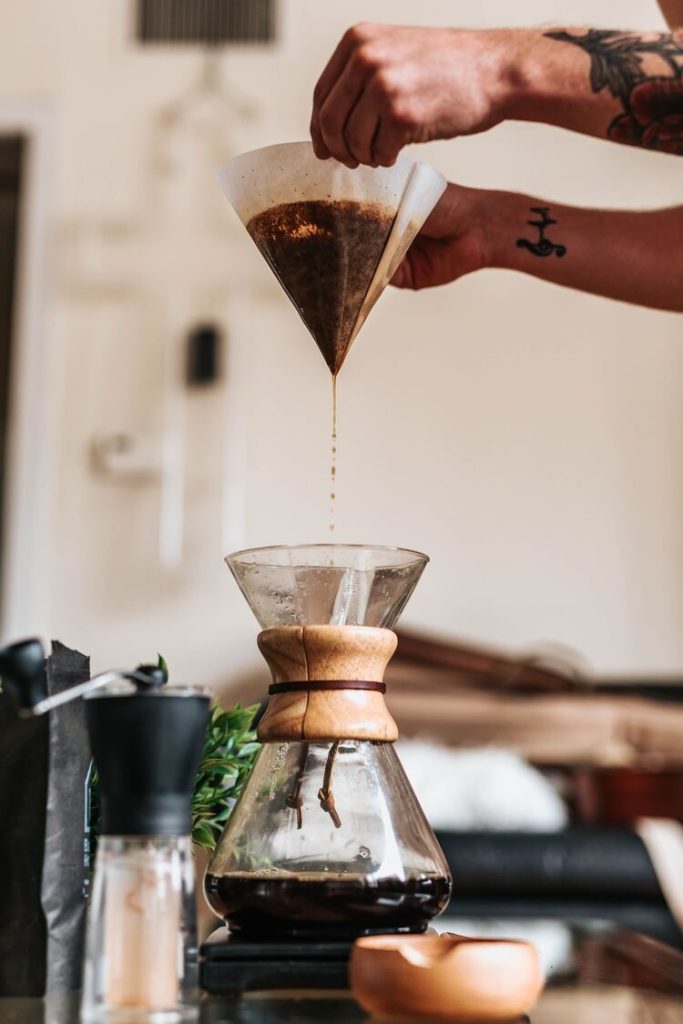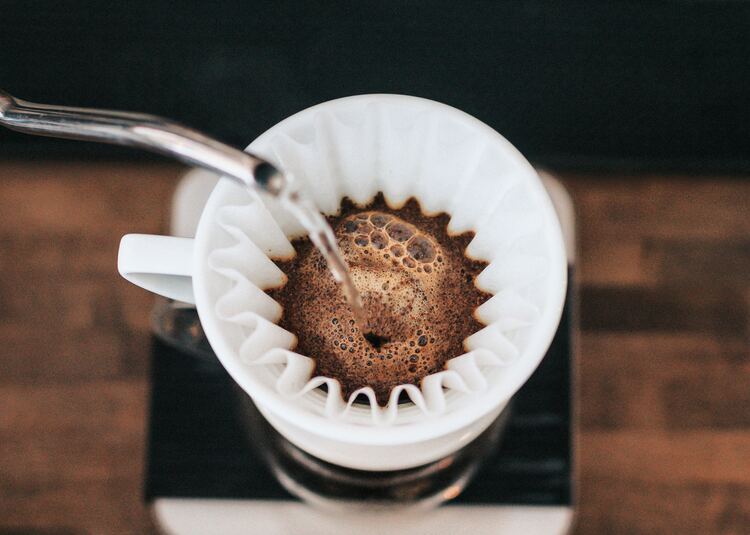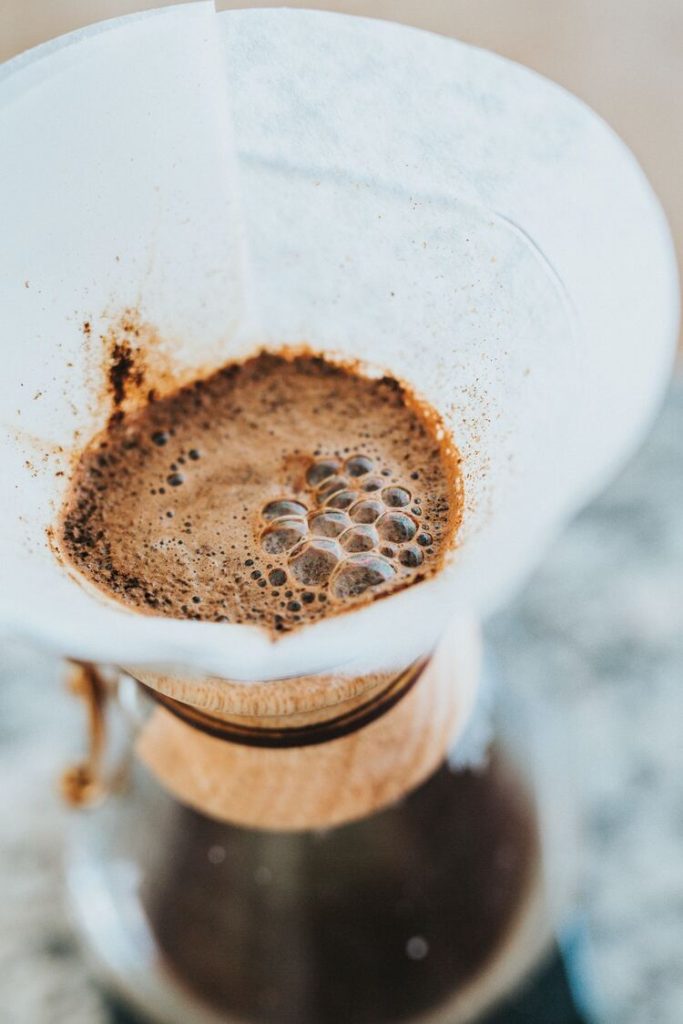When brewing the perfect cup of coffee, you might not realize the importance of selecting the right coffee filter. But don’t worry, we’ve got you covered. This article will explore the various types of coffee filters available and how they can impact your favorite morning beverage.
Not only does the coffee filter play a role in determining the taste and aroma of your coffee, but it can also affect the brewing process itself. With options ranging from paper to permanent filters, it’s essential to understand the differences and benefits of each type. This will help you make an informed decision and elevate your coffee experience to new heights.
So, let’s dive in and learn about the variety of coffee filters!
Please note: This article contains affiliate links, meaning I may earn a commission if you make a purchase by clicking a link. Of course, this comes at no extra cost to you and helps me keep offering readers solid information.

Basic Types of Coffee Filters
Paper Filter
When it comes to coffee filters, the most common type you’ll encounter is the paper filter. These disposable filters are typically made from biodegradable materials, which makes them eco-friendly. They come in various shapes, such as conical or basket, to suit your specific coffee maker.
Paper filters have a great advantage: they can remove residue, such as coffee oils and sediment, which results in a clean and pure-tasting coffee. However, keep in mind that you will need to replace them after every use, which may generate waste over time.
Metal Filter
An alternative option is the metal filter. These filters are typically made from stainless steel or gold-tone materials, making them reusable and easy to clean. A metal filter allows more oils and fine sediment into your coffee, producing a full-bodied and rich flavor. You can enjoy a strong cup of coffee while minimizing waste, which can last for a long time. Just remember to clean them regularly to keep their performance at its best.
Cloth Filter
Another choice you might consider is the cloth filter. Made from materials such as cotton, muslin, or hemp, these filters provide a unique middle ground between paper and metal filters. They are reusable, making them sustainable and cost-effective. The cloth’s natural fibers will absorb the coffee oils while allowing some granularity to pass through, providing a distinct taste. Wash them thoroughly after each use to maintain their effectiveness and store them in a clean environment.

Filter Shapes and Sizes
There are various shapes and sizes to choose from. In this section, we will focus on three main types.
Cone Filter
Cone filters have a conical shape and are perfect when you want a fine, rich coffee experience. The cone shape helps to extract more flavors from the coffee grounds, resulting in a more robust and full-bodied cup of coffee. Cone filters come in different sizes, the most common ones being #2, #4, and #6. Be sure to select the right size for your coffee maker, as it can significantly impact your coffee’s taste and strength.
- #2: Fits small cone-shaped coffee makers (1-4 cups)
- #4: Suitable for medium-sized cone coffee makers (8-12 cups)
- #6: Ideal for larger cone coffee makers (10+ cups)
Basket Filter
Basket filters are flat-bottomed and designed to fit drip-style coffee makers. They come in various sizes, the most common being 8-12 cup filters. They’re typically made of paper or reusable, fine metal mesh. The flat-bottomed filter shape allows for a more even extraction and less water channeling through the coffee grounds.
- 8-12 cup filters: Standard size for most drip coffee makers
- 4 cup filters: Smaller filter size for compact coffee makers
Disk Filter
Disk filters, such as Aeropress and French press, are primarily used in coffee presses. They are round, flat, and made from metal or paper materials. These filters are placed directly on top of the coffee grounds and serve to separate them from the brewed coffee as you press down on the plunger.
Disk filters come in various sizes to accommodate different coffee press styles and brewing capacities. Choose the correct disk filter size for your coffee press to achieve optimal coffee brewing.

Types of Coffee Filters: Paper
Paper filters are popular for brewing coffee using manual methods such as the Aeropress, Hario V60, and Chemex. They come in different types based on their treatment process: bleached and unbleached filters. Let’s dive into what each type has to offer.
Bleached Filters
Bleached filters are typically white because they undergo a bleaching process that removes the brown color of the paper. This process can involve using chlorine or oxygen-based substances to obtain that bright white appearance.
You can expect a clean, crisp cup of coffee when you use bleached filters. They effectively remove any lingering coffee grounds and oils from your brew, resulting in a smoother taste. Additionally, these filters have no noticeable impact on the coffee’s flavor, so you can fully enjoy the original taste of the beans.
However, it’s essential to consider the potential environmental impact of using chlorine-bleached filters. To reduce this, many people opt for oxygen-bleached filters, considered more eco-friendly.
Unbleached Filters
Unbleached filters keep their natural brown color because they haven’t undergone any bleaching process. As a result, they have a lower environmental impact than bleached ones, which might appeal to your eco-conscious side.
To use unbleached filters effectively, it’s crucial to rinse them before brewing. This helps to remove any potential paper taste that could find its way into your coffee. So, pour hot water over the filter, and it’s ready to use.
When using unbleached filters for Aeropress or Chemex, ensure they are appropriately sized to fit your device. Hario V60 users should look for cone-shaped filters explicitly designed for their cone-shaped drippers.

Types of Coffee Filters: Reusable
Reusable filters are a great investment for environmentally friendly coffee lovers. Not only do they reduce waste, but they also provide different taste characteristics.
Metal Coffee Filters
Metal coffee filters, typically made of stainless steel, are popular for those wanting a bolder flavor. Unlike paper filters, they allow more of the coffee’s natural oils to pass through, resulting in a richer cup. You’ll also notice that the coffee brewed with a metal filter has a slightly thicker texture or mouthfeel.
Caring for your metal filter is pretty simple. After brewing, gently tap the filter to remove any grounds and rinse it in warm water. To prevent residue buildup, periodically scrub the filter with a brush or soak it in a vinegar and water solution. This will ensure that your metal filter lasts longer and provides an optimal brewing experience.
Cloth Coffee Filters
Cloth coffee filters are another reusable option that offers unique benefits. Made from natural fibers like cotton, hemp, or flannel, they create a smoother, cleaner cup of coffee by catching more fine sediments. While still allowing some of the coffee’s oils to pass through, they produce a more balanced brew than paper-filtered coffee but with less body than metal-filtered coffee.
When it comes to maintenance, cloth filters require a bit more care than metal filters. After each use, rinse the filter thoroughly under warm water, removing all coffee grounds. Additionally, you should occasionally boil the filter in water for a few minutes to prevent residue buildup and any potential off-flavors. Make sure to let it dry completely to prevent mold growth.

Environmental and Health Concerns
Eco-Friendly Choices
When selecting coffee filters, it’s important to consider eco-friendly options. One popular choice is compostable filters made from materials like bamboo. These filters have a lower environmental impact and help enrich your compost bin when you’re done using them.
Organic cotton filters are also an intelligent choice. These reusable filters are made without harmful chemicals and can last years, reducing waste and saving money. Plus, they can be easily cleaned after each use.
Chemical Free Options
You might be concerned about unwanted chemicals affecting your coffee’s flavor and health. To avoid this, consider filters free from chemicals like chlorine and synthetic materials.
Consider filters made from unbleached or natural fibers. Bamboo is a popular option, as it’s naturally resistant to bacteria and doesn’t require the use of chemicals during processing. Additionally, natural oils from bamboo can even enhance your coffee’s flavor.
Lastly, be mindful of the materials used for non-paper filters, such as reusable metal filters. Some aluminum filters could potentially leach harmful substances into your brew. It’s always best to double-check the safety of your materials and go for chemical-free options whenever possible.
Types of Coffee Filters: Recommendations
Here are our top recommendations if you want to acquire some of the above-mentioned filters.
Melitta Basket Coffee Filters Natural Brown Unbleached

Hario V60 Paper Coffee Filters Single Use Pour Over Cone Filters

Melitta Bamboo #4 Cone Coffee Filters

GOLDTONE Reusable 8-12 Cup Basket Coffee Filter

Reusable Coffee Filters 8-12 Cup Permanent Coffee Filters Basket Washable

Bolio Organic Hemp Reusable Coffee Filter

Frequently Asked Questions
What are the main differences between paper and metal filters?
Paper filters are made from disposable materials and are single-use. They can provide a clean cup, as they tend to absorb oils and smaller coffee particles. Metal filters, however, are reusable and allow more oils and fine particles to pass through, resulting in a bolder and richer taste.
How does filter size affect brewing?
Filter size plays a role in brewing since it affects brewing time and coffee extraction. Smaller filters require a coarser grind to prevent over-extraction, whereas larger filters may require a finer grind to ensure optimal extraction. Remember that the right filter size depends on your taste preferences and brewing method.
How do Melitta filters differ from other coffee filters?
Melitta filters are known for their cone-shaped design, which promotes a more even extraction of coffee than flat-bottomed filters. They’re made of thicker paper with micro-perforations, which helps to retain more of the coffee’s natural oils and produce a smoother cup.
What is the difference between basket and cone-shaped filters?
Basket filters are flat-bottomed and are typically used in drip coffee makers. They provide a more balanced extraction, but may sacrifice some flavor clarity. Cone-shaped filters have a narrow opening at the bottom, which allows for a more controlled and even extraction, resulting in a cleaner taste.
Are there any eco-friendly options available?
Yes, eco-friendly coffee filters are available, such as reusable metal filters and biodegradable paper filters. Both options reduce waste and contribute to a more sustainable coffee brewing experience. Additionally, some paper filters are made from unbleached materials, which have a lower environmental impact than bleached ones.
What should I consider when choosing a reusable filter?
When selecting a reusable filter, consider factors such as compatibility with your brewing device, ease of cleaning, and the expected impact on flavor. Metal filters can influence the taste of your coffee and alter its body, so make sure to consider your personal preferences when making a decision.
I hope you have enjoyed the article and learned something new. Until next time, keep brewing!

Tell me, what types of coffee filters are you familiar with? Which ones do you use?